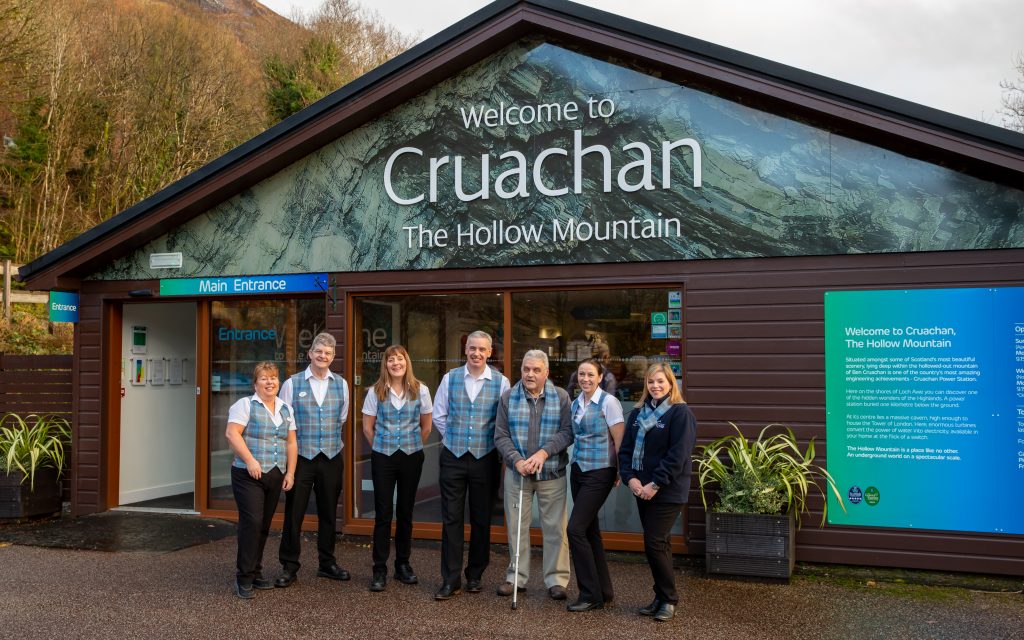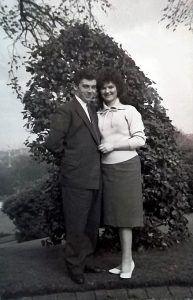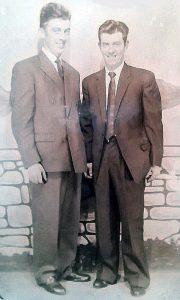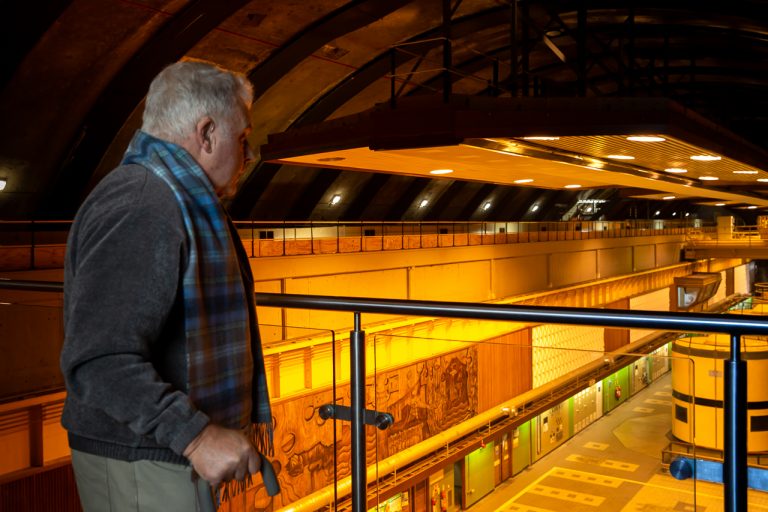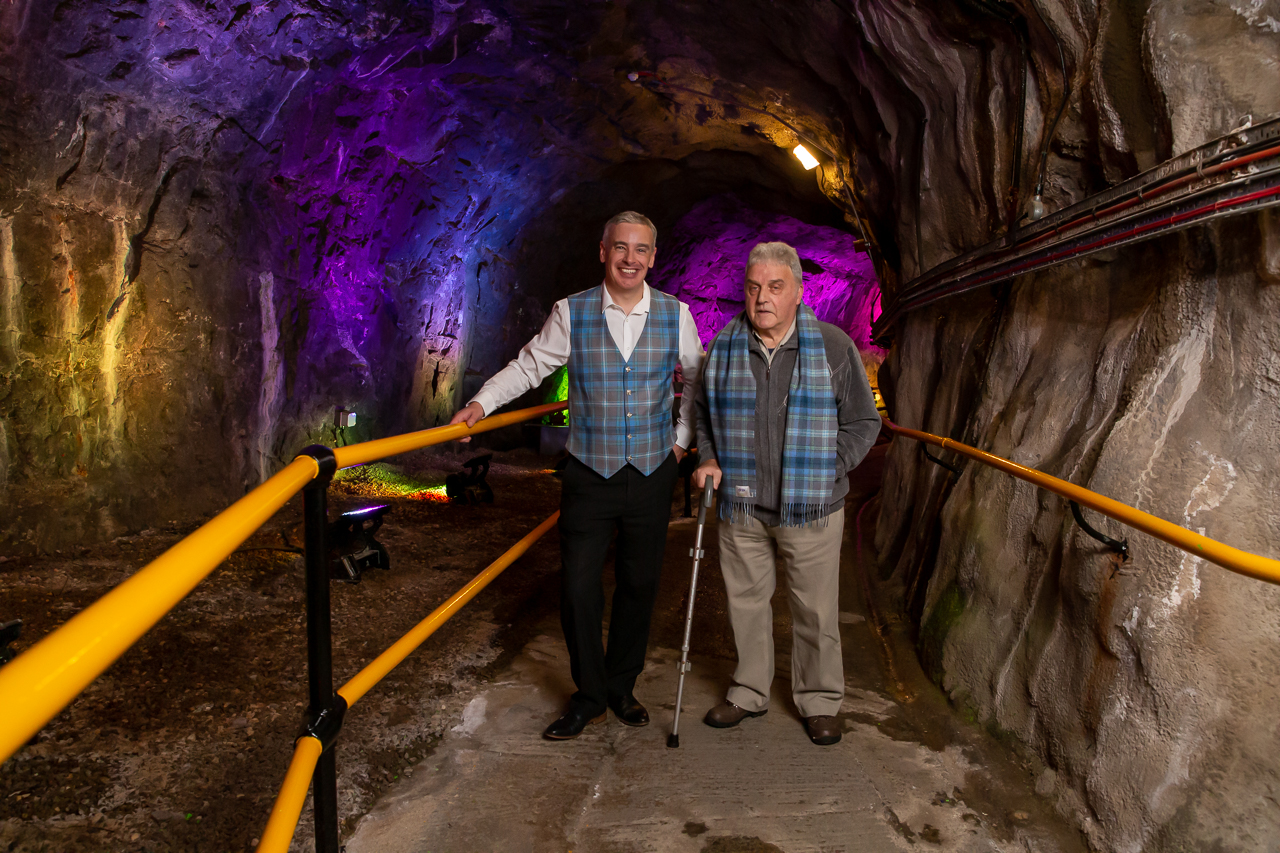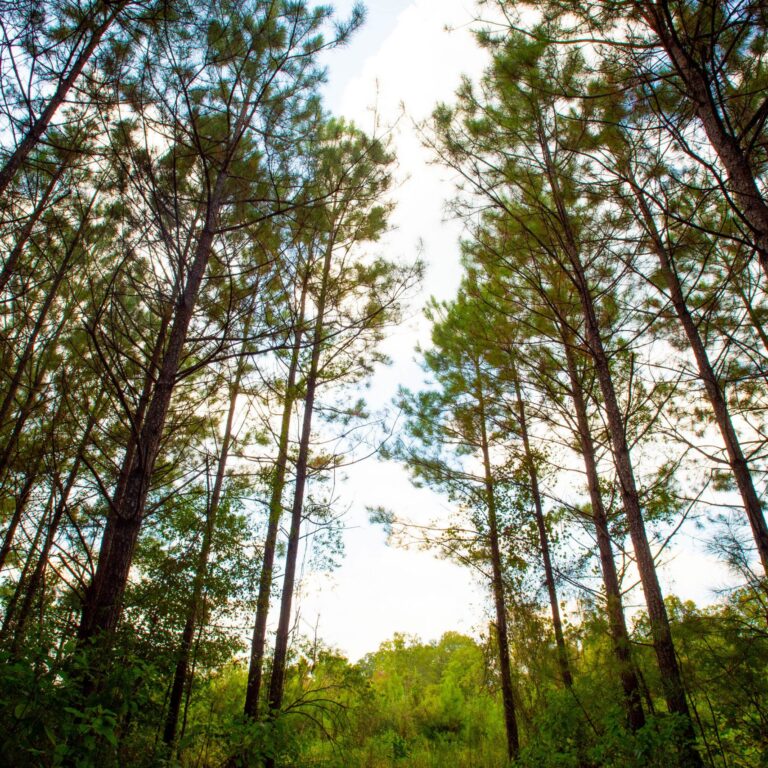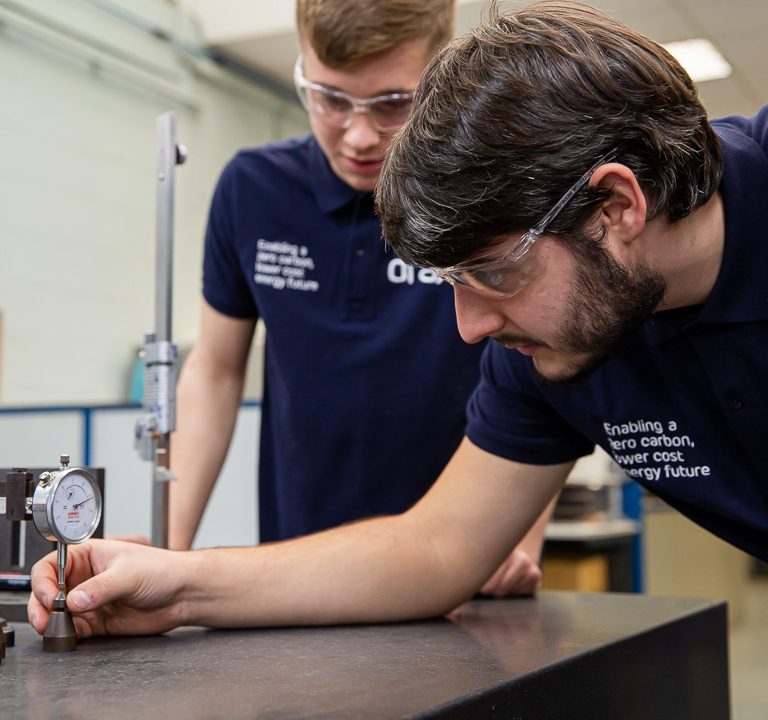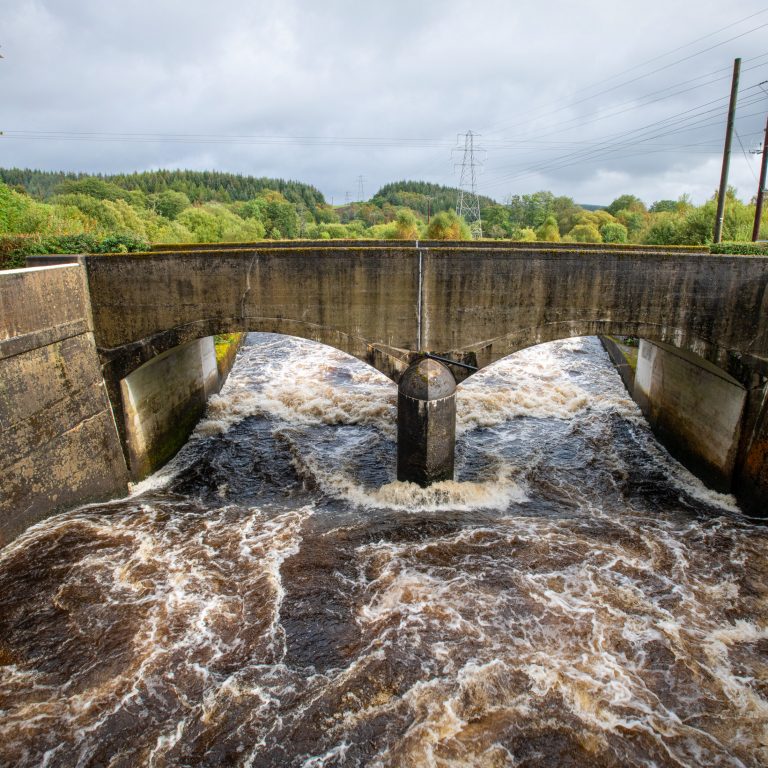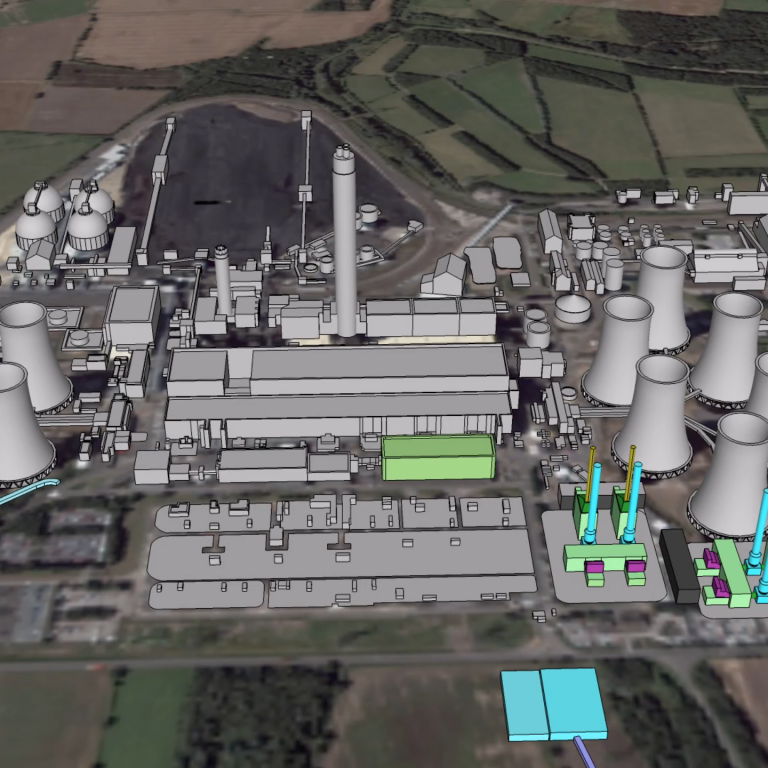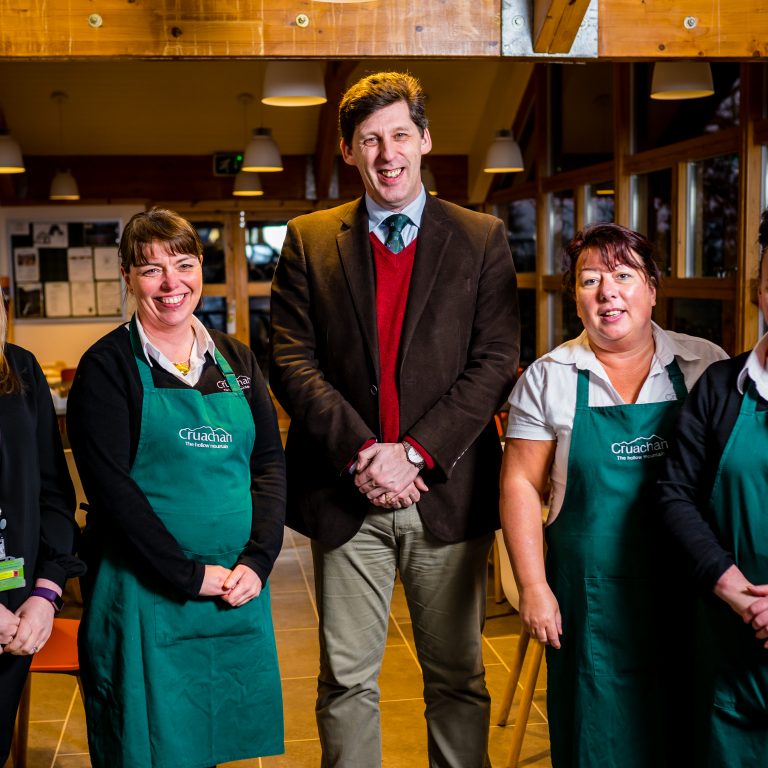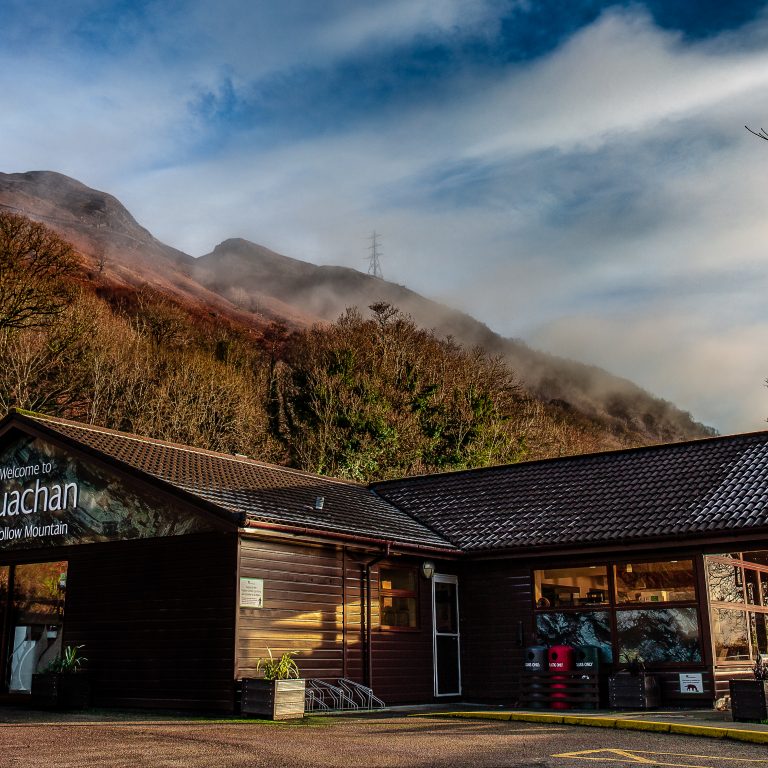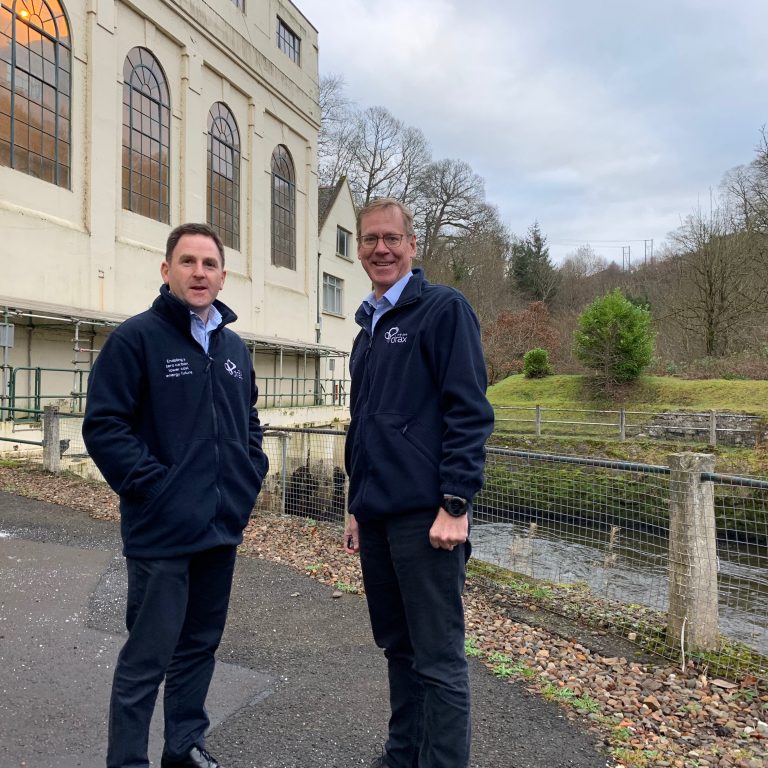The design, based on the Clan MacColl tartan sett, uses 15 strands of a special dark blue thread to represent those who tragically lost their lives building what was the world’s first reversible pumped storage hydro system, located in the Western Highlands of Scotland.
Ian Kinnaird, Head of Hydro at Drax, said:
“Building this unique power station was an astonishing feat of engineering, completed in challenging conditions. The work was physically demanding and at times, incredibly dangerous. Sadly, during the course of the construction, 15 men lost their lives.
“When we were commissioning this new tartan, we decided it was a fitting tribute to incorporate 15 dark blue threads in memory of those who tragically died – many of whom were very young.”
Between 1959 and 1965, a 4,000-strong workforce built the power station on the shore of Loch Awe in Argyll and Bute – 1,300 of them were known as ‘Tunnel Tigers’ – the men at the forefront of the work. They drilled, blasted and cleared the rocks from the inside of the mountain.
One of those who died was 23-year-old Edward Gallagher, from Donegal – the fiancé of Barbara McCabe, now 81, who lives in Inverness-shire.
Mrs McCabe explained how she got engaged to Edward on December 21, 1961 and they were planning to get married the following September.
However, tragedy struck just before Easter 1962, when loose rock in the ceiling of a tunnel fell down – the force of which was so strong, it pulled Edward out of his protective footwear.
“He was such a lovely, lovely man,” Mrs McCabe, recalled. “Eddie’s father sent me a telegram and what it said was: ‘Is Eddie alright?’ I didn’t know what it meant, I was busy getting ready for Eddie coming down so we could spend Easter together.
“He shouldn’t have been at work, but he’d swapped shifts with someone else who wanted to go home early for Easter – that was what Eddie was like. He was a great young man, always doing things like that to help people.”
Mrs McCabe explained that Mr Gallagher’s father travelled across from Ireland and they went together to the cottage hospital at Oban where Edward was being treated.
“When I saw Eddie, there wasn’t a mark on his face – but we were told his injuries were so severe there was no hope of survival. He passed away in the early hours of Easter Monday – the 23rd of April 1962.”
Mrs McCabe has always stayed in touch with Mr Gallagher’s family in Donegal and has visited his grave at a chapel in the village of Termon, near Letterkenny.
Of the tartan Drax has commissioned, she said:
“I think it’s a lovely way to make sure Eddie and the others who died are always remembered. I’ve told his family about it and I’m going to be sending them one of the new tartan scarves this Christmas.”
Hollowing out the Ben Cruachan mountain was done by hand-drilling two to three-metre-deep holes into the granite rockface. Gelignite was packed into the drilled holes and detonated – blasted rocks were then removed by bulldozers, trucks and shovels, before drilling began on a fresh section of exposed granite. Eventually some 220,000 cubic metres of rubble was removed.
Ian MacLean, from Oban, was a 20-year-old joiner when he started working at Cruachan in 1962. He said:
“I worked as a joiner on the roof of what is the machine hall now. The noise from the blasting was incredible – you didn’t just hear it, you felt it too.
“There was a lot of dust, but what bothered us the most was the smell – it was horrible. There were fumes from the explosives as well as the dump truck’s diesel engines that were running all the time – and we didn’t have masks to wear. Some days the air was so thick you could only see a few yards in front of where you were standing.”
In total, 20km of tunnels and chambers were excavated, including the kilometre-long entrance tunnel and the 91-metre-long, 36-metre-high machine hall.
The 77-year-old says that despite the conditions he worked in, it was an interesting job and he earned good money:
“When I finished as an apprentice joiner I was earning £9 a week – when I started working at Cruachan I was on treble that. The conditions we were working in were tough – but I met some great people and we were young. It’s just what we did.”
Polish and Irish labourers worked alongside Scots, as well as displaced Europeans, prisoners of the second world war and even workers from as far away as Asia.
The 15 men who died are remembered at Cruachan in a mural on the wall of the turbine hall at the heart of the power station and now visitors to the award-winning ‘Hollow Mountain’ visitor centre will see the new tartan waistcoats worn by guides.
Sarah Cameron, Drax’s Manager of the Hollow Mountain visitor centre at Cruachan, added:
“Our visitor centre guides will proudly wear the tartan on their waistcoats and continue to tell the stories about how this unique power station was built. It’s important that we remember the 15 men who died and the many others who were injured building this unique power station.”
The new tartan, made by Kinloch Anderson in Edinburgh, based on the Clan MacColl Sett, which was created in respect of Sir Edward MacColl, the brainchild and pioneer of Cruachan Power Station, has also been used to make some special scarves, available to buy from the visitor centre shop.
The Hollow Mountain visitor centre’s interactive exhibitions and displays help bring the history of the power station to life and explain how electricity is generated. There is also a café, gift shop and picnic area.
The visitor centre is closed now for Christmas and the New Year – reopening in February. To find out more or to book a tour go to the website.
Main photo caption:
- Ian MacLean (CR), Ian Kinnaird (C), and Sarah Cameron (R) and visitor staff
- View/download in high resolution
ENDS
Media contacts:
Aidan Kerr
Drax Group Media Manager
[email protected]
07849090368
Ali Lewis
Drax Group Head of Media and PR
[email protected]
07712670888
Editor’s Notes
- Read more about the men who built Cruachan on the Drax website.
- Drax acquired Cruachan power station at the end of 2018, when it bought a portfolio of flexible, renewable and low-carbon power stations located across Scotland and England.
- Since then, the visitor centre has been renovated and Drax has also introduced free school tours during term time as part of the company’s efforts to boost STEM (Science, Technology, Engineering and Maths) skills.
- 50,000 people visit Cruachan Power Station each year and take guided tours inside the subterranean world of the power station, where they can see the machine hall and learn about its history and the feat of engineering required to build it.
- Cruachan is one of four pumped hydro storage stations in the UK and has a capacity of 440 MW – enough to power more than 90,000 homes during peak demand.
- Built on the shores of Loch Awe in Argyll and Bute, it was the first reversible pumped storage hydro system on this scale to be built in the world.
- The turbine hall is located 1 km within the hollowed-out mountain of Ben Cruachan and houses four generators, supplying a range of vital balancing and ancillary services to the grid, such as frequency control, spinning and operating reserves, helping to maintain secure power supplies.
- Drax’s Scottish operations include hydro facilities in Galloway and Lanark and a biomass-from-waste plant at Daldowie, near Glasgow, along with Cruachan, all of which were acquired at the end of last year.
About Drax
Drax Group’s purpose is to enable a zero carbon, lower cost energy future. Its 2,900-strong employees operate across three principal areas of activity – electricity generation, electricity sales to business customers and compressed wood pellet production.
Power generation:
Drax owns and operates a portfolio of flexible, low carbon and renewable electricity generation assets across Britain. The assets include the UK’s largest power station, based at Selby, North Yorkshire, which supplies five percent of the country’s electricity needs.
Having converted two thirds of Drax Power Station to use sustainable biomass instead of coal it has become the UK’s biggest renewable power generator and the largest decarbonisation project in Europe.
Its pumped storage, hydro and energy from waste assets in Scotland include Cruachan Power Station – a flexible pumped storage facility within the hollowed-out mountain Ben Cruachan. It also owns and operates four gas power stations in England.
Customers:
Drax owns two B2B energy supply businesses:
- Haven Power, based in Ipswich, supplies electricity and energy services to large Industrial and Commercial sector businesses.
- Opus Energy, based in Oxford, Northampton and Cardiff, provides electricity, energy services and gas to small and medium sized (SME) businesses.
Pellet production:
Drax owns and operates three pellet mills in the US South which manufacture compressed wood pellets (biomass) produced from sustainably managed working forests. These pellet mills supply around 20% of the biomass used by Drax Power Station in North Yorkshire to generate flexible, renewable power for the UK’s homes and businesses.
For more information visit www.drax.com/us





